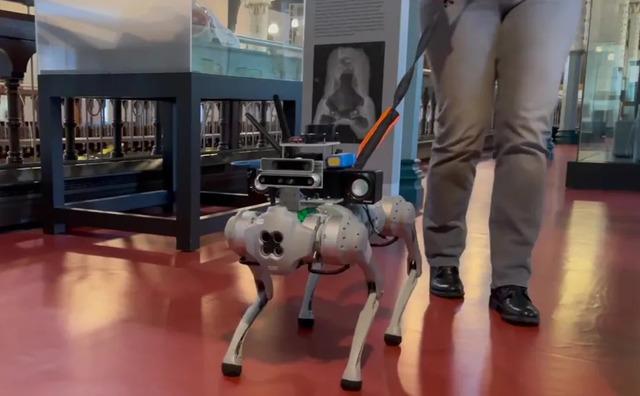Professor Wasim Ahmad, who took part in the project, stated that the most difficult thing during the development of such a robot was how to learn the environment.
His colleague Dr. Olaoluwa Popoola stated that in clear weather, the GPS system performs perfectly, but in closed areas, the signals are prone to distortion, which is a significant disadvantage for the project.
REMEMBER AND AVOID OBJECTS AND OBSTACLES
Engineers led RoboGuide on a leash around the Hunterian Museum in Glasgow.
Prof. Ahmad said: “We use computer imaging, we use 3D technology that scans the entire environment. It understands where every object, every post, every obstacle is and remembers them. It also remembers.”
Prof. Ahmad added: “The second thing is object or obstacle avoidance – we developed this using multiple sensors. The third thing we integrated is interaction.”
HE CAN SPEAK
Dr. “We integrated large language models so RoboGuide can have intelligent conversations,” Popoola said.
Engineers invited visually impaired people in the area to test the guide dog.
Participant Kyle Somerville said: “Absolutely, I would personally use this in the future. I know a lot of people who would want to try this or would definitely use it.”

